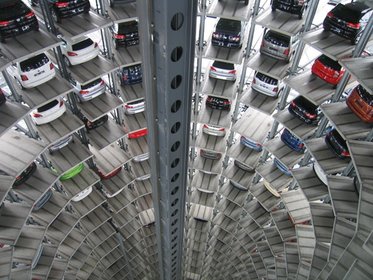
30/07/2018
Car tariffs, trade wars and the consequences for European car makers
Dino Collazzo
In Europe, the automotive industry employs, whether directly or indirectly, 3.4 million workers and produces 23 million motor vehicles with a sales surplus of 90.3 billion euro. This is what emerges from the report "The automobile industry pocket guide" produced by Acea (European Automobile Manufacturers' Association).
Investments in innovation, a positive trade balance and stable levels of employment. The European automotive industry is slowly returning to pre-crisis levels as shown by recent data published by Acea (European automobile manufacturers’ association) in its report "The automobile industry pocket guide". The risk, however, of a trade war between the two sides of the Atlantic - tariffs on steel and aluminium as well as 20 percent duties on European cars imported in the USA – not to mention trade tensions between the US and China - with negative consequences for some European manufacturers currently producing vehicles in the US destined for the Chinese market - could have heavy repercussions on the entire sector. Recent political tensions between the European Union and US President Trump, concerning new and higher customs tariffs, keep shaking the markets. So much so that some companies have launched a profit warning. Considering that the automotive industry is one of the major driving forces behind the entire European economy, a contraction in profit margins could stifle the recovery putting thousands of jobs at risk. Beyond the legitimate concerns about the industry’s future and the effects that decisions made at institutional level will have on the real economy, Acea’s data on the European automotive sector portray a fast recovering industry ready to face the challenges posed by the technological revolution sweeping across the industry: electrification, connectivity and autonomous driving. In Europe, according to Eurostat’s data contained in the report, the automotive industry employs, whether directly or through satellite industries, 3.4 million workers. The latter, in 2017, produced 23 million motor vehicles (23.3 percent of the total number of vehicles manufactured globally), 5.9 million of which left the old continent on a one-way ticket to foreign countries. The most attractive markets for European producers are the United States, China and Turkey. Among all the different types of vehicles exported cars took the lion’s share with 5.4 million units. The trade surplus generated by the entire sector in the previous 12 months was € 90.3 billion. If these figures are a clear evidence of the great work done over the last few years by the industry in its entirety, a much more interesting aspect concerns innovation. Here is where the automotive industry is making the greatest strides, even when compared to other manufacturing sectors. In fact, according to what we can read in "The 2017 EU industrial R&D Investment Scoreboard” issued by the European Commission, the automotive industry along with its supply chain invests 53.8 billion euro each year.
In 2017, the EU automotive industry exported 5.9 million motor vehicles worldwide for a total of 138 billion euro. The main destinations were the United States, China and Turkey. The bulk of exports involved cars (5.4 million) for a value of 127.7 billion euro.
1° Chart: Employment
In the European Union, 30.3 million workers are employed in manufacturing sectors, which represent 13.9% of all employees in the EU. Of these 11.3% work (directly and indirectly) in the automotive sector (3.4 million)2° Chart: Production
The European Union (19 countries) boasts 228 automobile assembly and production plants. On average, 7.8 vehicles per worker are produced each year within this area3° Chart: Trade
The Asia/Oceania region represents the largest export market for the EU. The European car industry generates a trade surplus of 90.3 billion euro.In 2017, the EU automotive industry exported 5.9 million motor vehicles worldwide for a total of 138 billion euro. The main destinations were the United States, China and Turkey. The bulk of exports involved cars (5.4 million) for a value of 127.7 billion euro.






